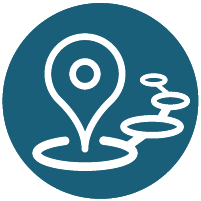Feedback in a Flash: Digital Exit Tickets for Dynamic Learning
,
Virtual
Other presentations in this group:
Session description
Outline
1. Introduction and Key Concepts (2 minutes) Quick overview of digital exit tickets and their impact on enhancing feedback and student engagement. Highlight the core benefits of accessible, digital exit tickets for immediate and effective student feedback.
2. Showcase of Examples (20 minutes)
Share via QR code for audience participation and demonstrate live 60 digital exit tickets, focusing on their adaptability and ease of use.
3. Review Implementation Strategies (8 minutes)
Share practical tips for seamlessly integrating digital exit tickets into various educational settings and customizing these tools to different learning needs and subject areas, ensuring accessibility and inclusivity. Participants will be invited to share their ideas for implementation.
Supporting research
"60 Digital Exit Tickets for Teachers: The Ultimate Exit Ticket Guide." BookWidgets, 5 Apr. 2021, www.bookwidgets.com/blog/2021/04/60-digital-exit-tickets-for-teachers-the-ultimate-exit-ticket-guide.
Fifer, Chloe. "Digging into student metacognition with a consistent exit ticket." (2019).
Fowler, Kelsie, Mark Windschitl, and Jennifer Richards. "Exit tickets." The Science Teacher 86.8 (2019): 18-26.
Hill, Katie. "Universal Design for Learning (UDL): Integrating UDL Instructional and Assessment Strategies to Assess Student Learning in a Middle School Classroom." (2023).
McCallum, Deborah. "Feedback in Online Learning Environments." Canadian School Libraries Journal 3.2 (2019).
Moreira, L. F. "IMPLEMENTING EXIT TICKETS COMBINED WITH GAMIFICATION TOOLS: IMPACT ON STUDENTS'PERCEPTIONS AND TESTING PERFORMANCE." INTED2019 Proceedings. IATED, 2019.
Presenters

Session specifications
Topic:
Grade level:
Audience:
Attendee devices:
Attendee device specification:
Laptop: Chromebook, Mac, PC
Tablet: Android, iOS, Windows
Participant accounts, software and other materials:
Subject area:
ISTE Standards:
Designer
- Use technology to create, adapt and personalize learning experiences that foster independent learning and accommodate learner differences and needs.
- Use technology to design and implement a variety of formative and summative assessments that accommodate learner needs, provide timely feedback to students and inform instruction.
Empowered Learner
- Use technology to seek feedback that informs and improves their practice and to demonstrate their learning in a variety of ways.

 Back
Back Trips and Tours
Trips and Tours Virtual Session
Virtual Session